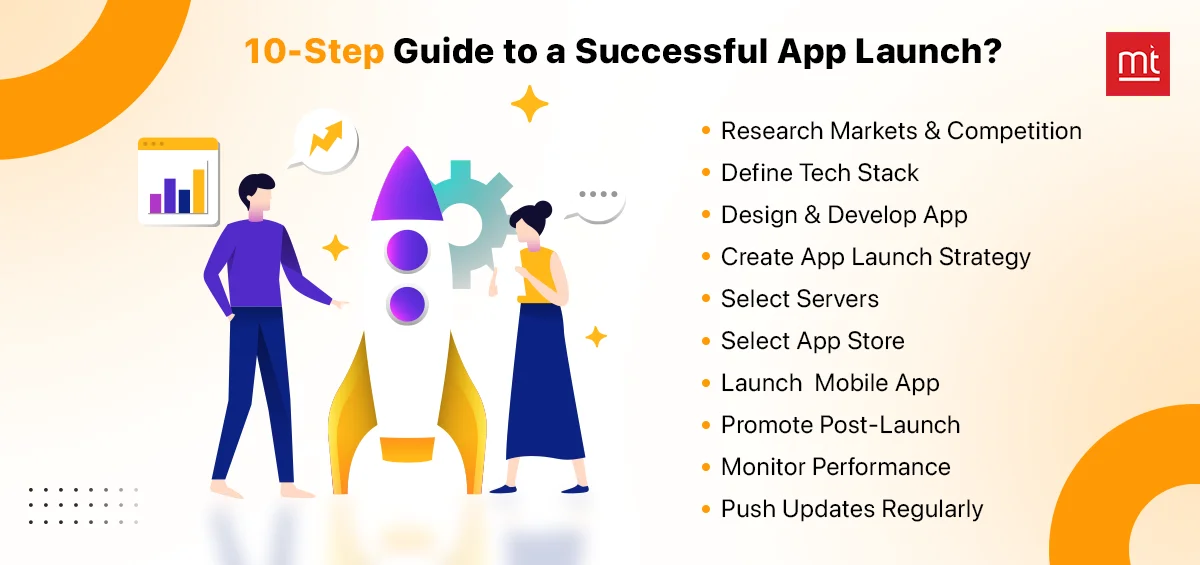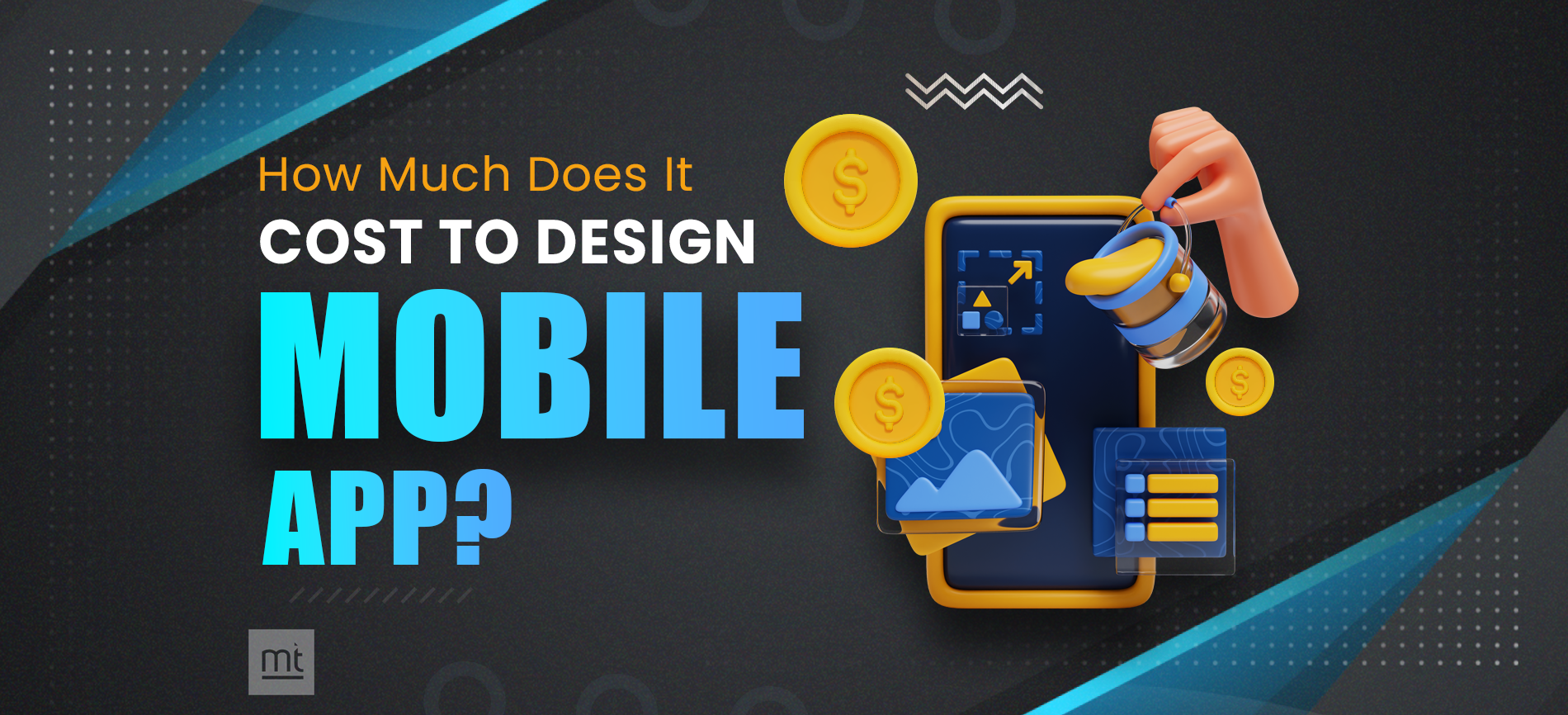Introduction:
In this era with hundreds of applications in the market, launching a functional mobile application is challenging yet exciting. Businesses not only need to focus on the marketing and development of the app but also think about user engagement and sustainability. This is why expert app development strategies are required. Remember, there are millions of users out there and thousands of applications are being launched daily that makes the competition intense.
It is clear that the mobile app market keeps expanding due to the growth of users adopting smartphones. To gain an edge within the already competitive industry, it is essential to not only focus on the features but also the users needs and expectations. Identifying these key critical user requirements will assist you in launching the application in the right manner which is the most important step. Let’s explore crucial steps and the process to launch an app for long term goals.
Latest Mobile app Launch Statistic
The mobile app market is growing rapidly and thousands of apps are being launched in the market every month. But competition is tough, and businesses need to know what’s currently trending before launching an app.
- The usage of mobile is increasing and desktop is decreasing over time. In 2015, it was 31 percent. Today, mobile traffic share is around 55 percent, more than desktop computers (43 percent) and tablets (2 percent) as the most used device to go online. This clearly indicates that the businesses are now required to launch mobile apps and snatch the maximum share of the market with it.
- There are a little over 13.8 percent of all mobile apps that allow users to download and play a wide variety of games.
- The mobile app industry is booming, as there are over 6.3 billion smartphone users around the world. The use of apps and smartphone penetration continue to grow at a steady rate without any indication of slowing down in the near future.
- As of 2023, 42matters reports that there are 1,902,461 apps running on the Apple App Store. Every day, the Apple App Store sees 1,366 apps released on average.
How to Launch an App - A 10-Step Guide to a Successful Mobile App Launch
To launch a mobile app , you need to plan, carry out your strategy, and keep improving. Every step matters if you want your app to stand out in a crowded market. Here are 10 key steps to launch an app that makes an impact.

#1. Research Target Markets & Competition
It is essential to do pre-research for your market, audience, future trends and competitor analysis before you just ask how do you launch an app. Find out who your audience is, what problems they have, and what they like. Study the apps your competitors have for the aspects they are getting right and where they may be falling short.
Use user reviews, pricing models, and conversational features to improve your app. This research validates your app idea, refines your value proposition, and starts preparing you for success. Without a clearly defined target market, user engagement, and retention stay low at best, and your app ends up sitting in the neglected obscurity of the app store like so many others.
#2. Defining the Technology Stack
Picking the right tech stack plays a key role in how well your app runs, grows, and stays secure. You'll need to choose between a native, hybrid, or cross-platform app based on what you can spend and what your users need. For the backend, go for tried-and-true frameworks like Node.js, Django, or Firebase. When it comes to databases, your choice between SQL and NoSQL hinges on how complex your app is. A well-thought-out tech stack leads to smooth performance, quick loading, and a better experience for users. In the long run, this approach cuts down on app upkeep costs and avoids technical hiccups.
#3. App Design and Development
How your app looks and feels to users matters a lot when you're making mobile apps. Make sure your design is easy to use, with smooth menus, things users can tap or swipe, and layouts that make sense. When you're building the app, use methods that let you work in short bursts, test often, and grow your app . Start with the most important parts first and make a basic version that works before you add fancy stuff. This way, your app will grab users' attention and work well, with fewer problems after you release it.
#4. Create an App Launch Strategy
Your app launch strategy plays a crucial role in deciding how visible and how efficient the adoption of your app. Outline your pre-launch marketing strategies, including teaser campaigns, email marketing, and social media promotions. Employ App Store Optimization (ASO) strategies—such as keyword-rich descriptions and engaging visuals—to enhance discoverability. This leads to buzz before the official product launch through the use of influencers, beta testers and early adopters. This sets the stage for optimum visibility right after the app release, generating downloads from the start, and giving it a better chance of hitting high ranks in app stores.
#5. Select the Right Servers
Selecting a right and suitable server infrastructure is part of keeping up with user traffic and data. Solutions such as AWS, Google Cloud, or even Microsoft Azure provide scalability, security, and reliability. Assess server performance on metrics such as uptime, speed, and data encryption. Load balancers and CDNs (Content Delivery Networks) are used to maximize performance during high traffic spikes. A solid backend infrastructure also helps prevent crashes, facilitates fluid user interaction and acts as a backbone of scaling as the user base on the application increases.
#6. Choose an App Store
Where you launch your app has consequences for its reach and success. However, the submission process, approval timelines, and monetization options differ between the Google Play Store and Apple App Store. Also consider the challenges for each platform such as app store policies, submission requirements, and app store optimization (ASO) strategies.
Android has better reach, while iOS produces more revenue. Explore alternative stores like the Amazon Appstore or the Huawei AppGallery for wider distribution. All this depends upon the first step, i.e. market research. If you know your audience, their demands and preferences you are all set for the question of how much does it take to launch an app.
#7. Mobile App Launch
The launch of your official mobile app should be planned so that it has the maximum possible impact. Release girl by market trends and competitor activity Test it as much as possible ahead of making it live. You could do a soft launch for beta testing and solicit feedback from real users before going into full release. At the same time, unleash your marketing campaigns, press releases and partnerships to generate buzz. Effective launching assures the users with increased interaction, good reviews and permanent success.
#8. Post-Launch Promotion
The real work begins after you launch an app. Use SMO, content, paid ads and influencer to keep users engaged. Use every method at your disposal to keep users in the game, including push notifications, referral programs, and personalized offers. Be consistent monitoring user reviews and ratings to rectify the issues and build credibility. Consistent optimizing your marketing strategy is the only way to ensure continued downloads and higher app store rankings over time.
#9. Monitor App Performance
After you launch your mobile app, tracking the performance metrics is important. Analytics platforms such as Google Analytics, Firebase, and Mixpanel can help you track user behavior, retention rates, and session durations. Monitor metrics such as uninstall rates and engagement to identify areas of improvement and optimize accordingly. Some of the things you would need to monitor are crash reports for the app, app speed, and server response times which will help you deliver that smooth experience. Performance audits are regular checks of your application so that you can remain within your user experience capabilities.
#10. Push Regular Updates
No app is ever a finished product. Continuously update your app to add new features, correct bugs, and improve security. These aspects can help to retain users and improve app store ranking. Learn for Mobile App Development Keep up with the changing versions of an operating system and their functionalities, improving and updating your applications as user needs develop. Continuous improvements are the only way to keep your app relevant, and prevent users from migrating to competitors.
Pitfalls to Avoid When You Launch a Mobile App
No business in this world is able to launch a successful business/app or fully satisfy its customers and thus no surprises for the mobile app development process. Given below are some pitfalls that businesses can consider and avoid them to ensure smooth adoption and long-term user retention.
1. Generalizing
One of the biggest assumptions businesses have is that they try to appeal to everyone with mobile app development services which is not practical in general life. It is essential to be specific with your audience and serve them consistently. Segment users, and build features that cater specifically to their needs.
2. Poor Onboarding
Users tend to leave your app right after installation when they encounter either a complicated or drawn-out onboarding procedure. The user onboarding process requires improvement through interactive tutorials and clear navigation with a simple sign-up process. App retention rates increase and user satisfaction improves when onboarding flows receive proper optimization.
3. Launching a Full-Fledged App
The risk of launching an entirely developed app increases when testing user feedback has not occurred. It is better to start with an MVP (Minimum Viable Product) for testing core features instead of large upfront investments. Users provide feedback to help improve features which leads to controlled growth of the product. The strategy reduces expenses in mobile app development while decreasing the possibility of application failures.
How Much Does It Cost to Launch an App?
The expenses to launch an app depend on various factors including the platform selection and application complexity and additional features required. A basic mobile app development project falls within the price range of $10,000 to $50,000 yet advanced complicated apps cost more than $200,000.
The end cost of an app depends on three primary elements: UI/UX design work and backend development and mobile app testing activities. The total expenses include fees from app stores together with marketing costs and post-launch maintenance.
Business owners need to factor in additional expenses such as third-party API integration costs and security enhancement measures. You should develop an MVP with scalability in mind because user-driven expansion offers the most effective way to control mobile app development expenses.
Why Choose ManekTech for a Successful Mobile App Launch?
ManekTech serves as a respected mobile app development company in USA which transforms business concepts into successful application solutions. Our team composed of developers and designers and testing experts guarantees that your mobile app launch will achieve your business targets.
Our company offers complete mobile app development services for iOS, Android and cross-platform projects which includes market research alongside mobile app testing and post-launch technical support.
Our organization helps businesses launch apps efficiently through our expertise in advanced technologies and proven mobile app development process that optimizes both time and costs. The search for mobile app developers who create innovative scalable solutions ends at ManekTech when you need a trusted partnership for success.
Conclusion
A successful app launch depends on developing a strategic plan which includes designing and building the application and promoting it through continuous updates. To achieve long-term success business owners need to perform market research and choose the correct mobile app development company and develop a comprehensive post-launch strategy.
Businesses should prevent two major mistakes through proper onboarding and user feedback before releasing their complete app. Mobile app development services that are properly selected create opportunities for scalability and security together with improved user interfaces.
Professional guidance helps both startups and enterprises achieve better results with their applications. A reliable development team like us enables smooth mobile app development while reducing expenses to achieve peak success in the competitive market.
Want to know how much it costs to launch an app? Contact us today for a mobile app development cost estimation.
About Author
Subscribe to Our Newsletter!
Join us to stay updated with our latest blog updates, marketing tips, service tips, trends, news and announcements!


![How Much Does It Cost to Build a Mobile App? [Checklist]](https://www.manektech.com/storage/blog/image/1708005911.webp)

















